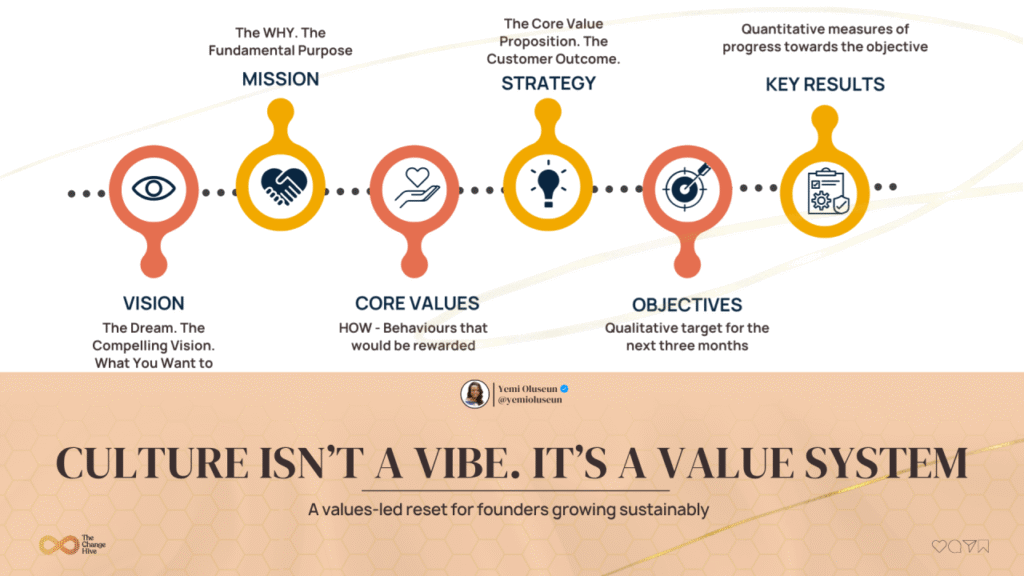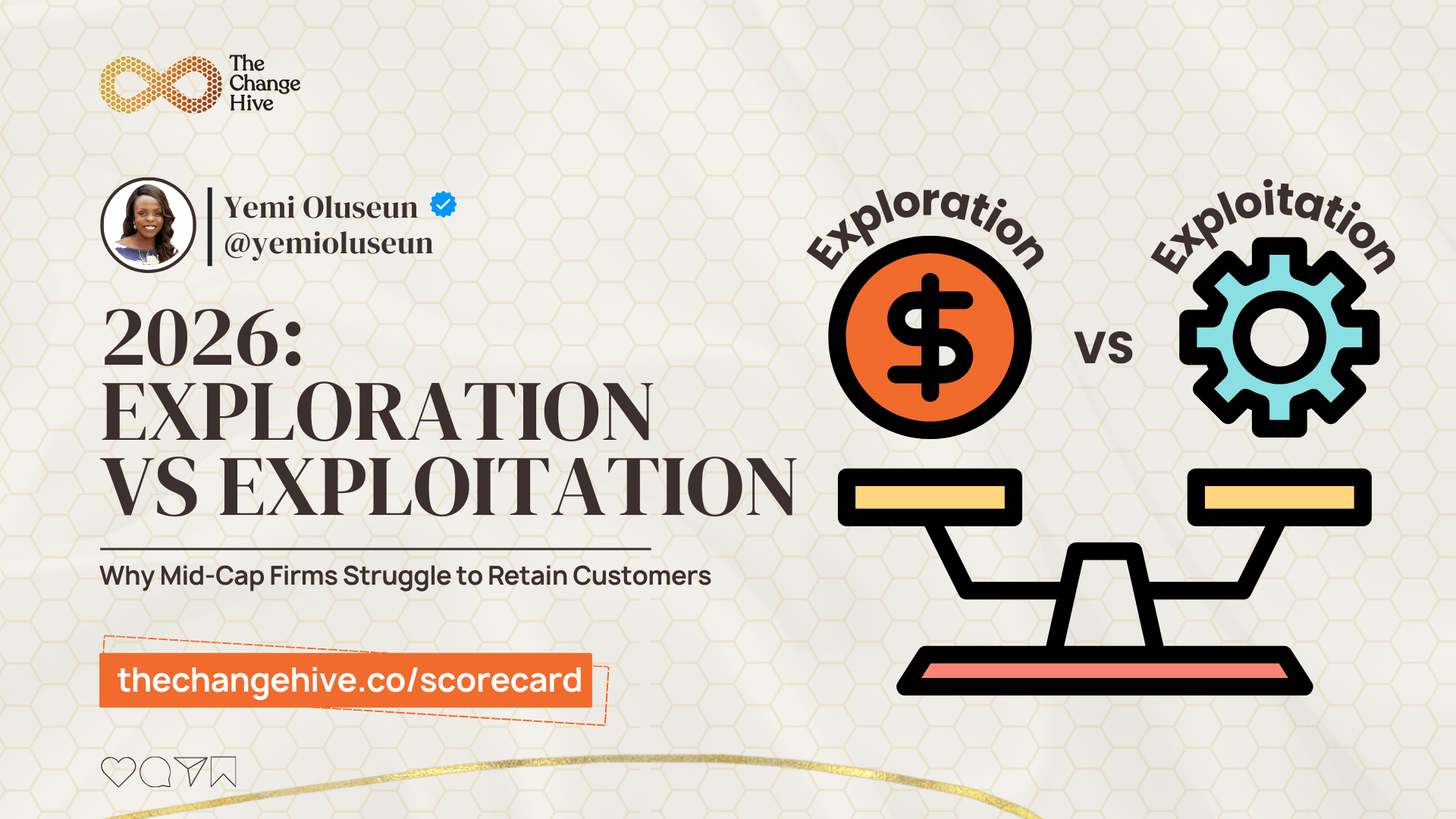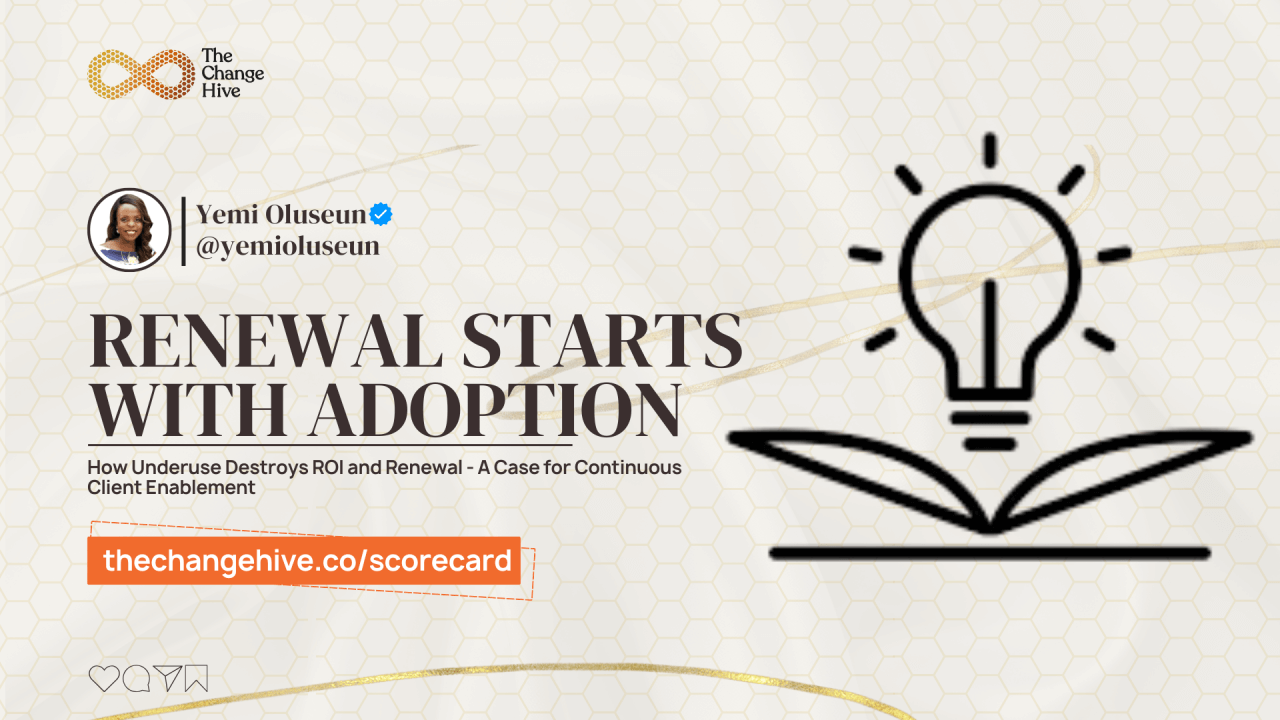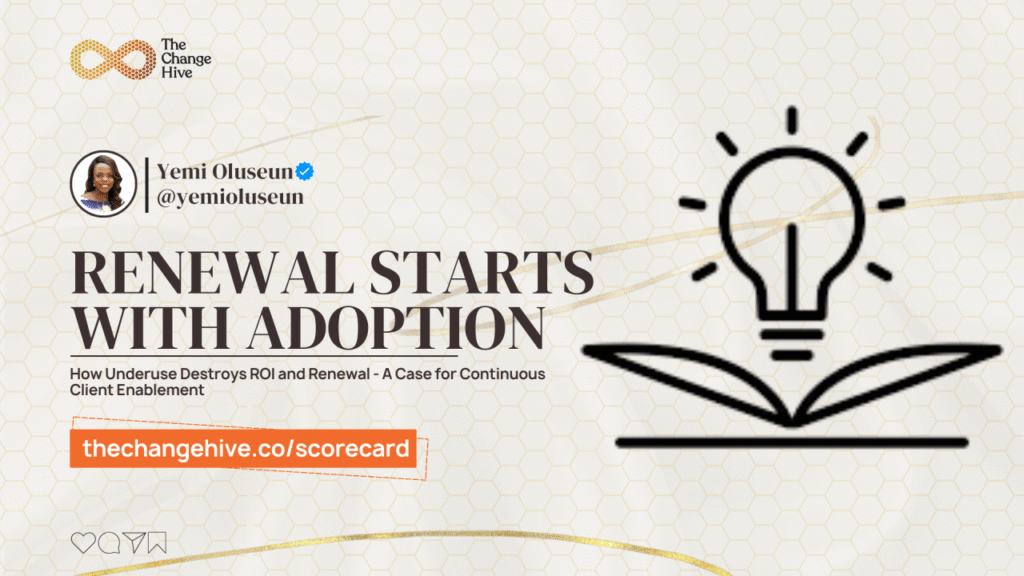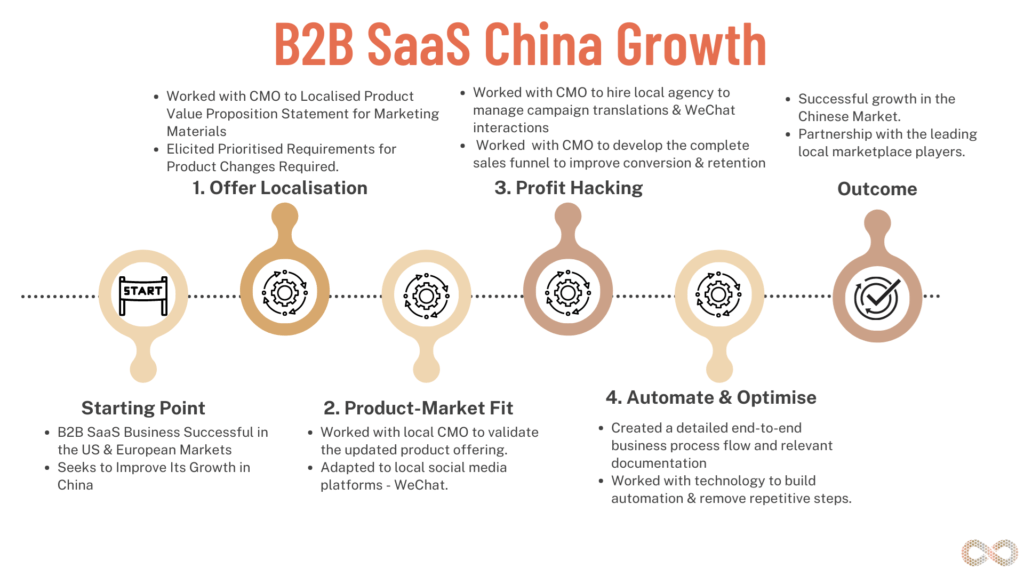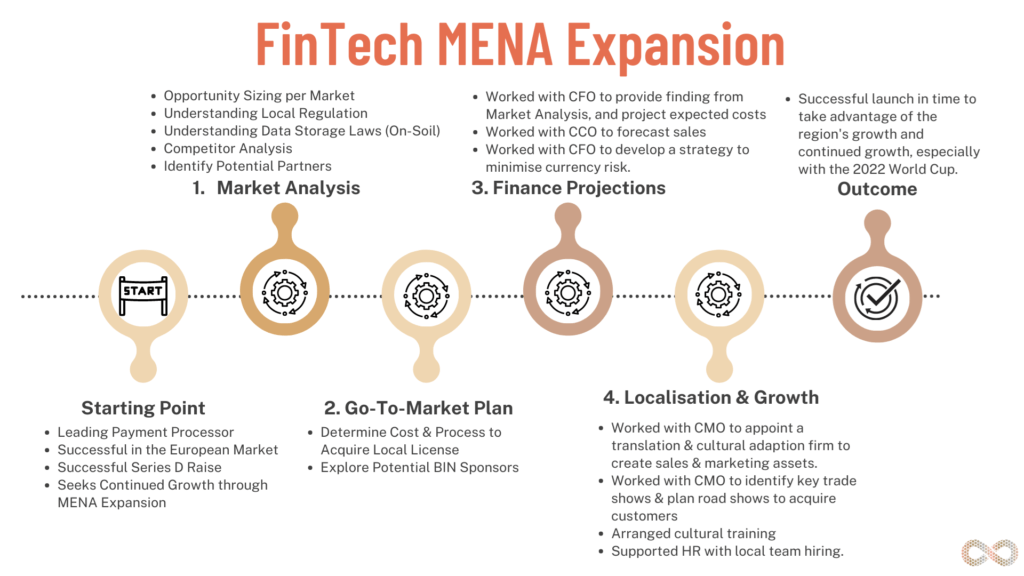Only 22% of teams feel a strong connection to their company culture.
Nearly half of employees would quit if their values don’t align.
Culture isn’t fluff. It’s a performance engine. One that scales or stalls based on what’s lived, not what’s laminated.
“If culture eats strategy for breakfast, then values are the table it’s served on.”
Most founders don’t set out to build a chaotic or toxic culture.
But when values aren’t named, they’re still felt.
And when they aren’t embodied, they’re still enforced. Just accidentally.
This matters more than ever in a growing business.
◉ The Real Problem
You’re hiring, shipping, and scaling… But something still feels off.
Not broken. Just misaligned.
That disconnect can show up as:
→ Friction with clients → Team tension that’s hard to name → Quiet exits that catch you off guard
Often, the issue isn’t a lack of capability. It’s clarity.
◉ The Common Fix
Most businesses respond with:
→ Poster values that no one remembers
→ Offsites that feel good but fade fast
→ Glossy decks from brand agencies that don’t know the day-to-day
It feels like culture work.
But, it doesn’t change how decisions are made — or who thrives.
“Only 22% of US teams feel truly connected to their company culture.” — Gallup
◉ Why That Doesn’t Work
Culture already exists — even if you didn’t define it.
And it’s shaping your outcomes every day:
→ Who gets promoted
→ What gets rewarded
→ Who belongs
→ Who quietly burns out
If your lived values and your stated values don’t match, trust breaks down fast.
“Nearly half of employees would consider quitting if company values don’t align with their own.” — Ethics Fallout Report, 2025
◉ The Better Approach: Start With Your Values
Before any OKR, roadmap, or strategy session… pause.
Culture starts with you — the founder. The founding team.
Your values, vision, and mission are the cultural seed.
They shape:
→ How your team sets priorities
→ Who gets hired
→ What gets tolerated
→ How aligned your product and promise are
If you aspire to a value you don’t yet fully live — name it.
Own it. Don’t fake it.
That one honest move builds more trust than any all-hands ever could.
You’re not expected to be perfect.
You’re expected to be honest.
Instead of pretending:
→ Identify someone on your team who already models the value
→ Ask them to lead by example
→ Let your team know where you’re growing
That’s how impostor syndrome lifts and trust compounds.
◉ My Current Values: G.R.O.W.S.
These aren’t polished or final.
They’re where I am right now — in work, life, and leadership:
→ Growth – I value curiosity, healthy stretch, and mutual progress
→ Results – Not perfection, just movement that matters
→ Ownership – I try to take responsibility even when it’s uncomfortable
→ Wisdom – For me, this is deeply personal — a blend of faith, intuition, and discernment
→ Service – I care about doing work that helps others win in the long term
And oh — I’m still becoming the person who beats the sun and starts her day at 5am. Not there yet. But she’s on my radar.
These values help me:
→ Choose the right clients and partners
→ Lead from clarity, not pressure
→ Make better trade-offs at fork-roads
◉ Want to Define Yours?
Try this process:
→ Reflect: Journal, voice note, talk to a trusted friend, or use assessments like StrengthsFinder, MBTI, or Career Anchors.
→ Make Two Lists: Actual values (what drives you now) and Aspirational values (what inspires you but isn’t embodied yet).
→ Pattern Match: Look at your role models. What values keep showing up?
Now shape those 3–5 into something sticky. Try an acronym. Something memorable.
Then — audit.
Does your vision, mission, and strategy match those values?
If not, that’s not failure. That’s a risk. And it’s trackable.
◉ Strategy and Values Are Intertwined
Values → Behaviour
Behaviour → Results
So values must shape strategy — or you’ll scale misalignment.
📊 Vision → Mission → Values → Strategy → Objectives → Key Results
Conduct a quarterly review of your values in conjunction with your OKRs.
It keeps culture active, not passive.
And no — it’s not always clean or easy.
Business gets messy. Deadlines come. Trade-offs happen.
But when you act out of sync with your values without acknowledging it, the cost becomes apparent somewhere.
Optimising short-term while ignoring long-term drift is a quiet killer of trust and brand equity.
So if you must step outside your values:
→ Do it consciously.
→ Log the risk.
→ Own the cost.
(Blame This Is Us – The TV Show for this pensive moment — that show has me channelling my inner-grandma one episode at a time.)
◉ Three Actions for This Week
☑ Quick Audit
Write down your top 3–5 values. Label each one:
→ Lived
→ Aspirational
→ Outdated
☑ Real Example Check
Can you point to one specific place where each value shows up — in onboarding, client delivery, team norms, or decision-making?
☑ Strategic Sync
At your next OKR or team meeting, ask: “Are our top goals in sync with our values?”
If not, flag it. Discuss it. Adjust if needed.
◉ Final Thought
“Retention is a trust signal. And trust grows when your values and delivery align — especially during scale.”
Culture isn’t a vibe.
It’s what your business becomes when no one’s looking.
You don’t have to get it perfect.
But if you’re honest, your team will feel it. And they’ll stay.
📩 P.S. I’m hosting a small founder roundtable in Q3 — real conversations around culture, growth, and strategic alignment. DM “Roundtable” if that sounds like your kind of room.
Because more leads won’t fix a leaky business.

